8 Raw Dog Food Diet Mistakes
Reviewed by Scott Morgan. Published on April 19, 2023
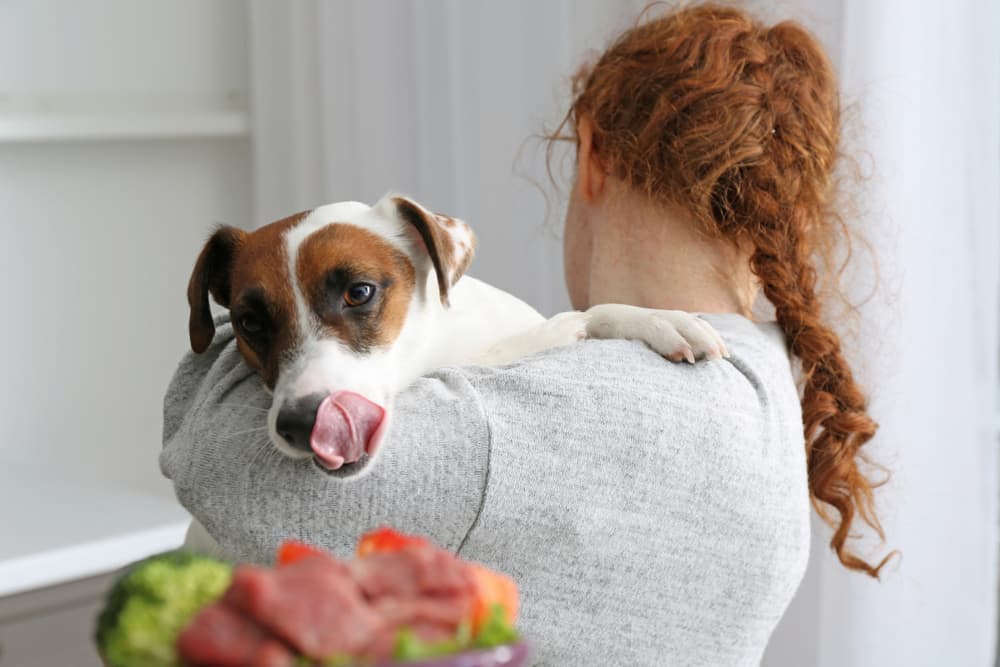
All featured products are chosen at the discretion of the Vetstreet editorial team and do not reflect a direct endorsement by the author. However, Vetstreet may make a small affiliate commission if you click through and make a purchase.
Raw feeding for dogs isn’t a new concept, but the trend has grown in popularity in the past few years, thanks in large part to YouTube and TikTok videos. A raw dog food diet typically consists of uncooked meat, ground bones, and organs, as well as fruits and veggies (the safe ones for dogs, of course).
Raw dog diets can be made from scratch or bought from commercial pet food manufacturers. These days, pet parents have access to a wide range of pre-made raw dog food options, including frozen, freeze-dried, and dehydrated meals, as well as hybrid products like freeze-dried raw and kibble blends.
We spoke to veterinary nutritionists about how to avoid some potentially dangerous mistakes if you want to feed your dog a raw food diet.
Mistake #1: Going the DIY Route
Many popular videos on social media—not to mention the scads of raw food recipes you can find by Googling—tout the benefits of raw food diets for dogs. However, veterinary nutritionists or food scientists do not create much of this content.
“The problem with raw diets is the same one with home diets—dietary efficacy,” says Dr. Stewart Morgan of Los Angeles Animal Specialty Emergency & Rehabilitation (LAASER).
In other words, many homemade diets for dogs, whether raw or cooked, are not properly nutritionally balanced, Dr. Morgan says. They often lack nutrients that dogs cannot get from non-food sources, such as vitamin D and calcium. “Most raw diets are high in protein and phosphorus, but they’re calcium deficient,” he explains.
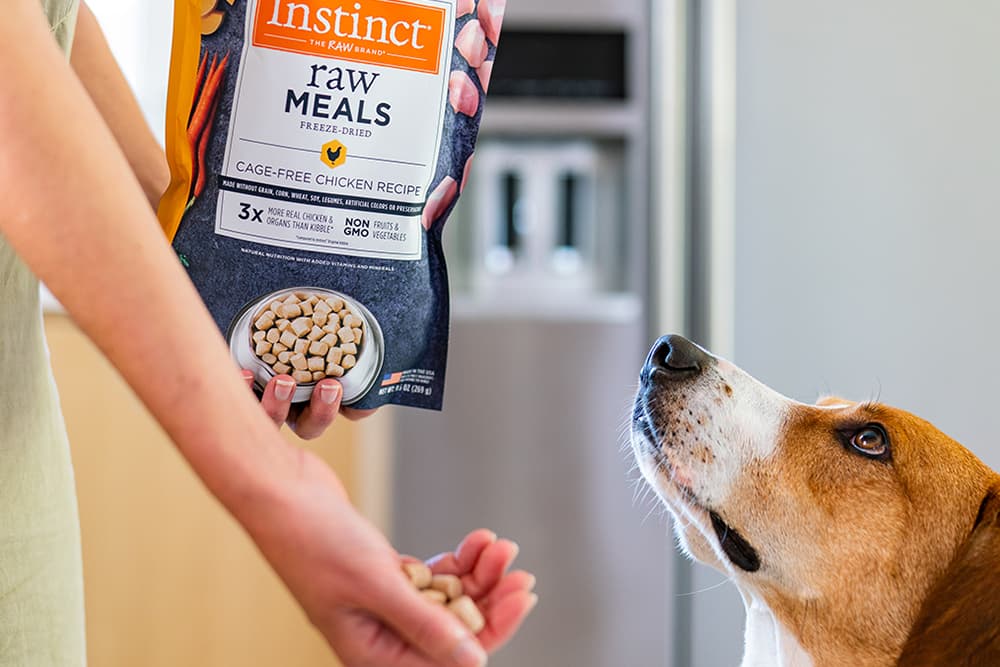
Dr. Belen Perez Marquez of ARCH Veterinary Services in San Jose, Calif., suspects that “99 percent of raw meals are unbalanced at home.” Unbalanced diets (raw or not) can cause major health problems in dogs, she warns.
One way to avoid nutritional deficiencies is to feed a complete and balanced commercial raw dog food, such as Instinct Raw Freeze-Dried Raw Meals, that follows the nutrient profiles established by the Association of American Feed Control Officials (AAFCO). Read the label closely to determine whether the product is a complete and balanced meal on its own, or if it’s intended for supplemental feeding, like a raw dog food topper.
Mistake #2: Not Storing Food Properly
Raw meats, bones, and organs are not like raw fruits and vegetables. They can’t just be left on the counter or in the fridge for long, and they need proper handling.
To inhibit the growth of harmful bacteria like salmonella and listeria, store raw meat or commercially made fresh or frozen raw dog foods, like Instinct Raw Frozen Meals, in the freezer until you are ready to use them. If thawing meals seems like too much effort, consider a shelf-stable product, like Instinct Raw Freeze-Dried Raw Meals, that are resealable between feedings.
When feeding a raw dog food diet, Dr. Morgan says pet parents need to ask themselves some critical food safety questions. This includes whether the food is kept at a safe temperature at home and whether retailers are storing and handling raw foods and ingredients properly. If pet parents are taking the homemade route, they’ll also want to consider whether they are willing to put in the time and effort to freshly prepare these meals every day.
Mistake #3: Not Handling Food Properly
Unsafe storage of raw meals and ingredients is directly related to mishandling food in the kitchen. When handling raw dog food, remember that harmful bacteria like salmonella and listeria can easily spread. Anything that comes into contact with raw meat, organs, or eggs—kitchen utensils, pet food bowls and scoops, countertops, cutting boards, your fingers, and yes, your dog—can become contaminated.
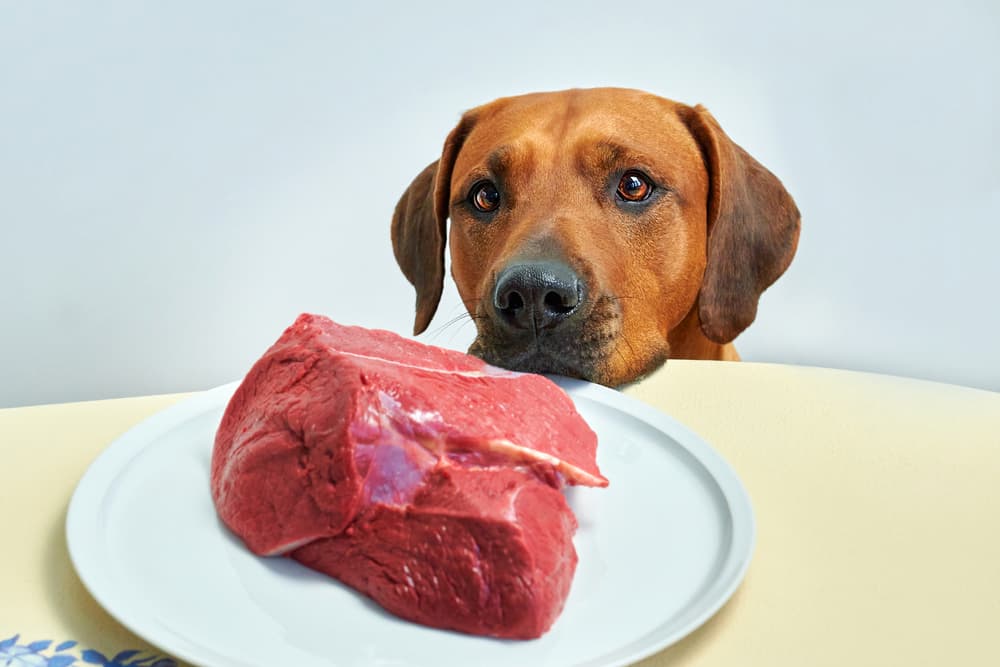
Dogs can carry the bacteria in their feces or saliva and spread it to people and other household pets—and they might not even show signs of infection. Older adults, young children, people with weakened immune systems, and pregnant women are at higher risk for more severe symptoms. “Say you have a baby in the house, and the dog licks the baby,” Dr. Morgan says. “Or you take your dog into an assisted living facility with immunocompromised people.” Symptoms of salmonella infection in humans include diarrhea (that can be bloody), fever, and stomach cramps, and that’s not the only infection that a raw diet can spread.
To prevent infection, you should thoroughly wash your hands after handling raw pet food and after touching potentially contaminated surfaces or objects, the FDA advises. You should also thoroughly clean and disinfect any surface or object that came into contact with raw food.
Do not let your dog lick your face or anyone else’s face, especially after your pet has eaten a raw meal. Likewise, you should wash your hands if your dog licks them. Finally, if you have young children or immunocompromised family members, consider the risks before selecting a raw diet for your pet.
Mistake #4: Romanticizing Raw Diets (Your Dog ‘Is Not a Wolf’)
Your bouncy (or maybe lazy) pooch has a wild bloodline. Somewhere around 15,000 years ago, give or take a couple millennia, domestic dogs diverged from wolves (1). And wolves, being wild, eat animals (meat, organs, blood, and bone) that they hunt. Obviously, they don’t cook their meals first.
This ancestry from wolves is the connection often made as to why a domestic dog should eat raw. But for Dr. Morgan, that’s a thin justification. “Someone’s French Bulldog or Chihuahua is not a wolf,” he says. “That is a domesticated animal that we’ve bred to rely on us.”
On average, wolves only live from 6 to 8 years in the wild, according to the PBS program Nature. Those years are often tough, Dr. Morgan says. “It’s feast or famine in the wild,” he says. “Malnutrition is a major cause of death. Animals in the wild are not necessarily healthy. Existence is a very, very low bar for health.”
Cooked and heat-treated pet foods, he says, have eliminated most of the problems that come with consuming animals caught in the wild—abundance and regularity of eating, for one, but also problems that can arise from a lack of quality control. After all, not every animal caught and eaten is itself healthy or disease free, and that can cause problems for whatever eats it.
In other words, if romanticizing your dog as an ancient wild creature is the motivation for going raw, Dr. Morgan says, you might be barking up the wrong tree.
Mistake #5: Improperly Transitioning to Raw Food
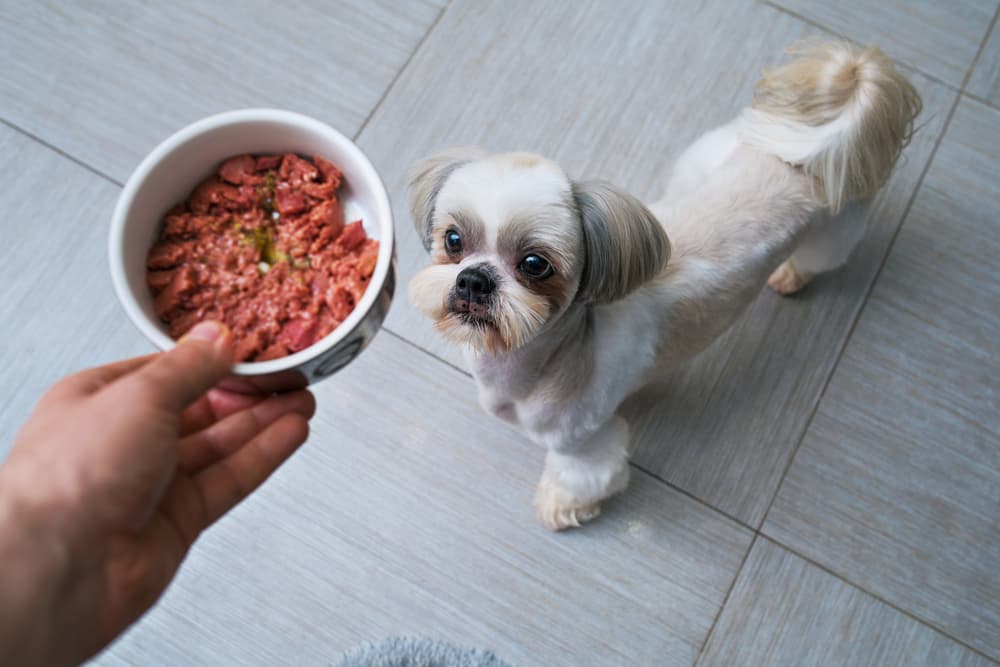
Changing your dog’s diet should not happen overnight. A proper transition period can take from 10 days to three weeks, depending on the individual dog and their gut tolerance. Taking it slow will reduce—but is not guaranteed to eliminate—the likelihood of gastrointestinal issues or other digestive ailments that can come with switching your dog’s food.
Mistake #6: Not Weighing the Pros and Cons
Consider whether the benefits of feeding raw dog food outweigh the risks for your individual pet and your family. Formal scientific evidence is still lacking when it comes to the perceived health benefits of raw feeding. “There’s a lot of information on the internet that claims [a raw diet] is healthy, but none of these are proven,” Dr. Marquez says.
While there are plausible claims that raw feeding may lead to better digestibility and improved stool quality, many other claims remain anecdotal or opinion based (2).
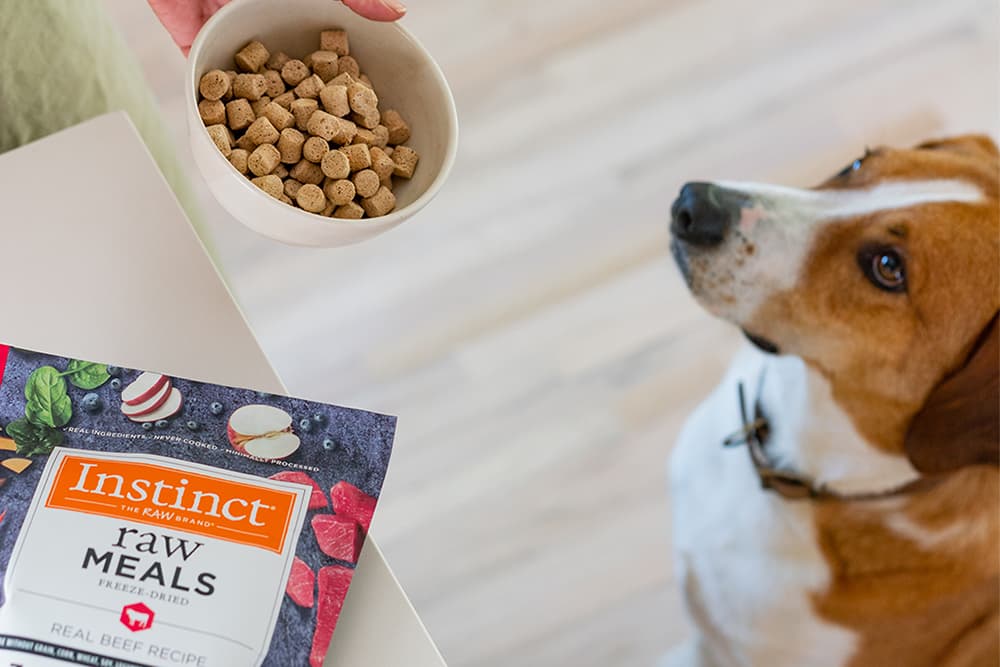
Since research in this field is ongoing, if you do choose to feed your dog a raw food diet, be sure to look for brands that invest in science-led formulas. For example, Instinct has partnered with a university-led research program to better understand how raw diets affect dogs’ health. So far, they have demonstrated that puppies fed raw have fewer environmental allergies as adults and a reduced risk of developing inflammatory bowel disease later in life compared to puppies fed kibble (3), but research on these issues is still ongoing. There is further ongoing research to see how a raw diet can positively impact mobility issues, chronic ear infections, and cancer in dogs.
Mistake #7: Not Researching Raw Dog Food Brands
If you are feeding commercial raw dog food, look for reputable pet food manufacturers that demonstrate a commitment to food safety and quality. Many raw pet food manufacturers use a treatment method called High-Pressure Processing (HPP) on frozen and freeze-dried raw foods to kill harmful bacteria. Some brands may even carry special certifications, such as Safe Quality Food (SQF) certification.
You should also check to see what types of experts the company has enlisted to develop their products—such as veterinarians, vet techs, food scientists, and nutritionists—and find out where the company sources their ingredients.
Mistake #8: Not Involving a Veterinarian
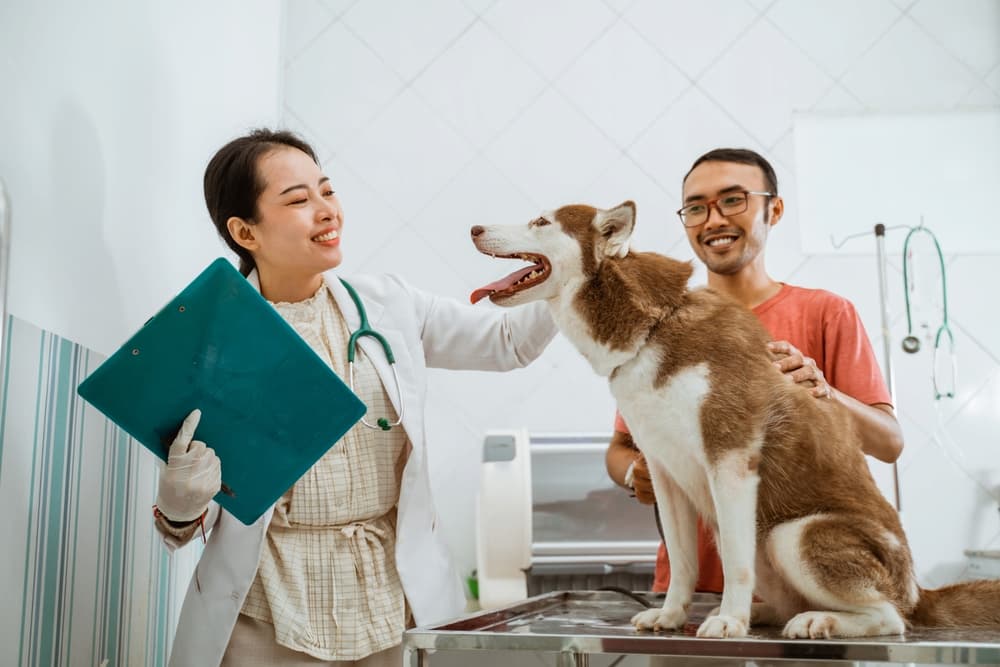
If you really want to transition your dog to a raw diet, Dr. Morgan recommends speaking with your veterinarian or a veterinary nutritionist first. If you have a senior dog with a health condition, for example, your veterinarian might advise against feeding a raw dog food diet because certain pets can be more susceptible to food-borne illnesses.
In addition, a high-protein raw diet is not recommended for dogs with kidney or liver issues. Raw diets might also contain bone fragments that can pose a choking hazard for your pet.
As mentioned earlier, feeding a homemade raw dog food diet can put your pet at risk of nutritional deficiencies. Even if you decide to go with a commercially made raw product, it’s still best to consult with your vet to ensure you are feeding the right formula for your dog’s life stage and the appropriate portion size. Overfeeding can lead to unhealthy weight gain or an overabundance of a particular vitamin or mineral.
The Final Verdict
Being the curator of your dog’s diet should not be taken lightly. Given the risks of mishandling or misformulating raw meats, organs, or dairy products, or of improperly storing or handling ingredients or commercially made raw products, you have to be vigilant about safety and sanitation, as well as nutritional balance, with every single meal.
Homemade and commercial raw dog food diets can work for your pup, but there is little margin for error. If you decide to go raw, the best advice is to consult a vet before you start introducing any raw foods, commercial or otherwise, to make sure it’s safe and appropriate for your dog—and keep your vet in the loop.
